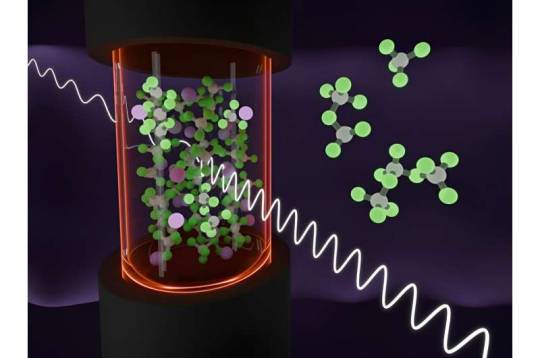#Molten Salt
Explore tagged Tumblr posts
Text
Draco hates muggle technology until he learns about smartphones. You mean it allows people to contact their children in seconds? He wouldn’t have to wait hours or days between owls from his son?
He enlists Hermione (because Harry knows about smartphones, but he’d never hear the end of it if he asked for Harry’s help) and returns to the Manor with 2 iPhones.
Scorpius has been begging his dad for one ever since Albus introduced him to the devices over the Christmas holidays. He’s ecstatic.
Hermione develops a charm that allows the phone to function even in the presence of magic, and Scorpius sends his dad pictures of anything and everything that tickles his fancy: selfies of him and Albus in their dorm, an adorable pygmy puff they spotted at Weasley’s Wizard Wheezes, a video of him successfully casting his first patronus.
It takes Draco forever to learn how to use it, but it’s so worth it in the end.
#i want to write a fic about this#if anyone would be interested in reading#it’s the way i paused my molten salt nucear reaction research project to type this out#scorpius malfoy#scorbus#albus severus potter#cursed child#the cursed child#albus potter#hpcc#scorpius hyperion malfoy#draco malfoy
112 notes
·
View notes
Text

redesigns my beasts lol
#cookie run kingdom#cookie run oc#burnt sugar cookie#jamberry cookie#molten salt cookie#venom spice cookie#citric acid cookie#boros art
10 notes
·
View notes
Text

Sometimes when I'm birdwatching
#sometimes when i’m birdwatching#things that aren’t birds#crescent dunes#concentrated solar power#got a bucket of molten salt for ya#where do you want it?#I wonder how many people#refer to these installations#the same way my partner in crime and I do#as#the eye of sauron
27 notes
·
View notes
Text
Note to people writing alien invasion storylines; if you think aliens need a reason to try and conquer our planet, here’s a few reasons;
Earth has plenty of uranium and thorium in it’s crust; along with fossil fuels that can’t be found in space or on other planets.
A thing sci-fi writers tend to forget is that rare metals are actually pretty common on an interplanetary or interstellar scale; arable land isn’t.
Earth’s pressurized atmosphere and gravity are themselves resources; the aliens may well want to conquer the planet for space to grow crops or livestock.
Expanding on the first point; Metals are pretty common in asteroids; earth has a lot of silica, sulfur, phosphorus, chlorine, boron, etc that aren’t common in asteroids;
Note; this list assumes the would-be-invaders have biochemistry mostly compatible with earth’s, and that they are economically-minded enough not to bother with conquering a place unless there’s money in it; we’re also assuming they can’t/won’t terraform somewhere else, and that “mining for money” is still something they do.
#writer stuff#writing advice#no really#if you want phosphorus or chlorine#earth’s a damn good place to get them#oh I forgot sodium#if the aliens are running molten salt reactors sodium is definitely something they wanna mine
2 notes
·
View notes
Text

Decoding reactive species in molten salts
By unraveling vibrational signatures and observing ion exchanges, an Oak Ridge National Laboratory team revealed how chemical species form in a highly reactive molten salt mixture of aluminum chloride and potassium chloride. The findings are published in the journal Chemical Science. Mixtures of chloride salts are often used in electrochemical studies essential in understanding battery performance. Determining chloride's basicity is crucial for developing corrosion-resistant materials. "Understanding the behavior of molten salts in reactive environments is very challenging," said Chemical Separations group lead Vyacheslav Bryantsev. To overcome this challenge, the team used supercomputing to carry out nanoseconds of electronic-level simulations, showcasing how reactive species form, evolve and break over time.
Read more.
5 notes
·
View notes
Text



Salted Egg Yolk Custard Steamed Buns Recipe 🐷 My favorite buns at dim sum!
#salted egg yolk custard buns#salted egg yolk buns#salted egg yolks#steamed buns#chinese baos#dim sum#custard buns#chinese food#chinese recipe#youtube#sikfan kitchen#cantonese food#salted egg yolk molten buns#salted egg yolk lava buns#buns#piggy buns#Youtube
10 notes
·
View notes
Text
A trio of Steamed Molten Salted Egg Yolk Custard Piggy Buns (猪仔流沙包) in a bamboo steamer basket. Contained within is savoury and sweet molten lava of salted egg yolk custard that burst out upon biting into the pig-face bun.


My brother’s table ordered the Crispy BBQ Honey Pork Buns (脆皮叉烧包) and he sent one over to our table. Inside it are juicy sweet pieces of char siu which went well with the lightly crispy bun.


We had the Steamed Glutinous Rice with Chicken wrapped in Lotus Leaf (珍珠糯米鸡), a more luxurious version of Lo Mai Gai. While the taste is decent, there is no wow factor though the lotus leaf did imparts it unique fragrant to the glutinous rice.

#Canton Paradise#乐天小香港#Restaurant#Junction 8#Dim Sum#点心#Piggy Bun#猪仔流沙包#Salted Egg Yolk#Custard#Molten#Lava#BBQ Honey Pork Bun#脆皮叉烧包#Char Siu#Glutinous Rice#Chicken#Lotus Leaf#珍珠糯米鸡#Lo Mai Gai#Cantonese#Lunch#Food#Buffetlicious
32 notes
·
View notes
Text
MSR refueling
0 notes
Text
Google backs new nuclear plants to power AI
Google is partnering with nuclear startup Kairos Power to construct seven small nuclear reactors in the U.S., a groundbreaking deal aimed at supporting the company's growing energy needs for AI and promoting a nuclear revival. The agreement, which includes a commitment to purchase 500 megawatts of power, marks the first commercial initiative for small modular reactors in the U.S. Kairos plans to deliver the reactors between 2030 and 2035, using molten fluoride salt instead of water as a coolant. This partnership addresses the demand for stable, carbon-free energy in the tech industry.
#Google#Kairos Power#Small nuclear reactors#Nuclear energy#AI power needs#Nuclear revival#500 megawatts#Molten fluoride salt#Carbon-free energy#Tech industry energy demand#Nuclear startup#Modular reactors#U.S. energy partnership#2030-2035 nuclear plan#Clean energy solution
0 notes
Text
Molten Salt Storage Tank Equipment Market Insights and Future Development Projections 2024 - 2032
The Molten Salt Storage Tank Equipment market is becoming increasingly relevant as the world shifts towards renewable energy sources. This article delves into the intricacies of this market, examining its components, driving factors, challenges, and future potential.

The Molten Salt Storage Tank Equipment market is poised for substantial growth as the demand for renewable energy storage solutions rises. With its numerous advantages and growing acceptance within various industries, molten salt storage technology is likely to play a pivotal role in the global energy landscape.
Overview of Molten Salt Storage Technology
What is Molten Salt Storage?
Molten salt storage technology involves the use of salt mixtures, typically sodium nitrate and potassium nitrate, to store thermal energy. This method is primarily utilized in Concentrated Solar Power (CSP) systems, where it allows for the efficient storage of heat generated during sunny periods for use when sunlight is not available.
Advantages of Molten Salt Storage
High Energy Density: Molten salts can store large amounts of thermal energy in a relatively compact form.
Cost-Effectiveness: Compared to other thermal storage methods, molten salt systems often require lower operational costs.
Scalability: These systems can be scaled to meet the needs of small facilities or large power plants, making them versatile for various applications.
Market Dynamics
Current Market Landscape
The Molten Salt Storage Tank Equipment market is witnessing substantial growth, fueled by the rising demand for renewable energy and advancements in energy storage technologies. With governments and organizations committing to carbon-neutral initiatives, the adoption of molten salt storage is becoming more prevalent.
Key Market Drivers
Rising Demand for Renewable Energy: As solar energy adoption increases, so does the need for effective energy storage solutions, positioning molten salt technology as a viable option.
Government Initiatives: Many countries are implementing policies and incentives to promote renewable energy projects, which, in turn, boost the molten salt storage market.
Technological Advancements: Ongoing research and development efforts are leading to improved efficiency and reduced costs for molten salt systems.
Market Segmentation
By Technology Type
Single Tank System: Utilizes a single tank for both charging and discharging processes.
Two Tank System: Employs separate tanks for heat storage and heat transfer, enhancing efficiency.
By End-User Industry
Concentrated Solar Power Plants
Industrial Applications
District Heating Systems
By Geography
North America
Europe
Asia-Pacific
Latin America
Middle East and Africa
Challenges Facing the Market
High Initial Investment
One of the main barriers to the widespread adoption of molten salt storage technology is the high initial capital investment required for installation and infrastructure.
Technical Challenges
Molten salts operate at high temperatures, which can lead to material degradation and require robust engineering solutions to ensure system longevity and reliability.
Competition from Alternative Technologies
Other energy storage technologies, such as lithium-ion batteries and pumped hydro storage, present competitive alternatives, which may limit market growth.
Future Outlook
Emerging Trends
Hybrid Energy Systems: The integration of molten salt storage with other energy sources (like wind or photovoltaic systems) is likely to become more common, enhancing overall system efficiency.
Sustainability Initiatives: Growing emphasis on sustainable energy solutions will drive further research into improving the efficiency and performance of molten salt systems.
Market Projections
The Molten Salt Storage Tank Equipment market is expected to see significant growth in the coming years, with increasing investments in renewable energy infrastructure and technology improvements leading the way.
Conclusion
The Molten Salt Storage Tank Equipment market is poised for substantial growth as the demand for renewable energy storage solutions rises. With its numerous advantages and growing acceptance within various industries, molten salt storage technology is likely to play a pivotal role in the global energy landscape. Stakeholders in this market should focus on overcoming challenges and leveraging emerging trends to ensure they remain competitive and successful in this evolving sector.
#Molten Salt Storage Tank Equipment Market Size#Molten Salt Storage Tank Equipment Market Trend#Molten Salt Storage Tank Equipment Market Growth
0 notes
Text
Molten Salt Thermal Energy Storage Market is Estimated to Witness High Growth Owing to Increased Adoption of Concentrated

The molten salt thermal energy storage market involves the storage of heat or thermal energy by heating a molten salt mixture to a high temperature and storing it so that the stored heat can be used for power generation later on or for heating and industrial processes. Advantages of using molten salts include stability at high temperatures, non-flammability, low cost, and non-toxicity. Thermal energy storage helps utilities and industrial facilities store thermal energy and use it whenever power production may be needed to meet peak energy demands.
The Global Molten Salt Thermal Energy Storage Market is estimated to be valued at US$ 2.02 Bn in 2024 and is expected to exhibit a CAGR of 9.6% over the forecast period 2024 to 2031.
Key Takeaways
Key players operating in the molten salt thermal energy storage are Yara International ASA, Acciona S.A., Abengoa SA, BrightSource Energy, Inc., SENER Grupo de Ingenieria, S.A., SolarReserve, LLC, Engie SA, SCHOTT AG, Torresol Energy Group. Key players are increasingly investing in R&D activities to further improve the technology efficiency.
The increasing demand for renewable energy due to raising environmental concerns and supportive government policies promoting adoption of renewable sources Molten Salt Thermal Energy Storage Market Demand Countries are setting ambitious renewable energy targets which will require flexible thermal energy storage systems to complement the intermittent renewable sources like solar and wind.
Technological advancements are increasing the efficiency and reducing the costs of concentrated solar power systems integrated with molten salt thermal storage. New materials with better thermal properties than the current nitrate salt mixtures are being developed for next generation plants. R&D is also focusing on improving components like heat exchangers and pipelines to minimize heat losses.
Market Drivers
Growing installations of concentrated solar power plants integrated with molten salt based thermal storage systems is a key driver for the market. The ability of thermal energy storage to provide dispatchable solar power helping to address the intermittency issue of solar energy is boosting their adoption. Government incentives and policies supporting expansion of renewable energy are further promoting molten salt based concentrated solar power plants with storage. Challenges in Molten Salt Thermal Energy Storage Market
The Molten Salt Thermal Energy Storage Market Size And Trends is facing various challenges currently which needs to be addressed for the sustained growth of the market. One of the major challenge is the high capital investment required for setting up a Molten Salt Thermal Energy Storage plant. As the technology uses molten salt as a heat transfer medium to store thermal energy, setting up a plant with necessary piping, tanks, heat exchangers etc requires massive investment. The cost of salt itself including procurement, handling and recycling also adds up to the overall expenses. Developing low cost thermal storage systems is the need of the hour to make these projects viable. Another challenge is related to the corrosion issues in the storage tanks and pipes used for molten salt.
Finding corrosion resistant materials suitable for high temperature applications needs further research and development. Grid integration of these storage facilities is also a complex task requiring reforms in the existing regulatory framework around the world. Sustaining high thermal efficiencies over many cycles of charging and discharging cycles is a technical challenge that remains to be addressed fully. Wider commercialization and economies of scale can help in overcoming some of these challenges.
SWOT Analysis
Strength: High energy density and ability to store thermal energy for long durations (upto days); Well suited for pairing with concentrating solar power plants. Weakness: High capital cost; Require specialized materials to handle corrosive nature of molten salts. Opportunity: Increasing integration of variable renewable sources increases demand for long duration storage; Favorable government policies supporting renewable energy adoption presents new opportunities. Threats: Competition from other newer energy storage technologies; Unpredictable nature of government support policies.
B
In terms of value, North America currently dominates the molten salt thermal energy storage market owing to significant research investments and presence of major project developers in the region. Countries like USA has several pilot and commercial scale plants in operation. Europe is the second largest regional market led by Spain and Italy where concentrating solar power plants paired with molten salt storage are actively deployed. Asia Pacific region is projected to be the fastest growing market during the forecast period led by China, India and Middle Eastern countries where ambitious renewable energy targets are driving new molten salt storage projects.
Currently Spain accounts for the largest installed capacity for molten salt thermal storage globally, driven by the successive rounds of tenders and commissioning of large scale solar thermal power projects in the country. Going forward China is expected to emerge as the fastest growing regional market owing to its enormous renewable energy deployment plans involving technology transfers from overseas projects. Get More Insights On, Molten Salt Thermal Energy Storage Market About Author: Ravina Pandya, Content Writer, has a strong foothold in the market research industry. She specializes in writing well-researched articles from different industries, including food and beverages, information and technology, healthcare, chemical and materials, etc. (https://www.linkedin.com/in/ravina-pandya-1a39841
#Molten Salt Thermal Energy Storage Market#Molten Salt Thermal#Thermal Energy#Salt Thermal Energy Storage#Molten Salt Thermal Energy Storage Market Trends#Molten Salt Thermal Energy Storage Market Demand
0 notes
Text
We Write Reports on CO2 Removal, But Fail to Remove Much
There has been a report issued on the state of carbon dioxide removal (http://ianmillerblog.files.wordpress.com/2024/06/c57f5-the-state-of-carbon-dioxide-removal-2edition.pdf) that paints a rather gloomy picture. A large number of countries pledged in the Paris Agreement to reduce emissions of CO2. So far, what has actually happened is the total is increasing. This report has given up on the 1.5…
View On WordPress
#carbon dioxide levels#carbon dioxide removal#carbon market#climate change#molten salt reactors#nuclear power#Paris agreement
0 notes
Text

Electrons are quick-change artists in molten salts, chemists show
In a finding that helps elucidate how molten salts in advanced nuclear reactors might behave, scientists have shown how electrons interacting with the ions of the molten salt can form three states with different properties. Understanding these states can help predict the impact of radiation on the performance of salt-fueled reactors. The researchers, from the Department of Energy's Oak Ridge National Laboratory and the University of Iowa, computationally simulated the introduction of an excess electron into molten zinc chloride salt to see what would happen. They found three possible scenarios. In one, the electron becomes part of a molecular radical that includes two zinc ions. In another, the electron localizes on a single zinc ion. In the third, the electron is delocalized, or spread out diffusely over multiple salt ions.
Read more.
7 notes
·
View notes
Text
Dc x Dp prompt #13: Hell to Pay
They say there are only two things certain in life: death and taxes. That’s why even the Joker doesn’t fuck with the IRS.
However, unfortunately for the Joker the other certainty is death and he has yet to pay his dues. Just like how he could only get away with tax evasion for so long, there are only so many times the Joker can dodge death.
Death is coming to collect, with interest.
And the Joker will have hell to pay.
~ A dark green cloud swirls over the city. From it, emerge three oppressive figures:
The one on the far left with flowing hair like white-hot fire. His vambraces made of (what appeared to be) molten glass stopped under his fingers, which then extend into into claws that seemed to drip lava. He had spiked obsidian pauldrons on his shoulders, fastening a luminous, stark-white cape to his shoulders. He wore a coronet of lightning and wielded a flail that appeared to be made of coal chains and a shrunken Red Giant star.
The second on the far right had a helm of dark iron wreathed in a plume of purple flame. His gauntlets and sword flamed with green hellfire. A pure black sheath seemingly made of void and a silver hunting horn were tied to his waist. He wore an armor forged of shadows and proofed with fear. He rode atop a mighty stead. An inky dark stallion with a curved horn and bat-like wings. His form was constantly slightly shifting depending on the angle which you viewed him making him appear larger and more slippery than he was, enhancing his disquieting nature.
The third stood in the middle, smaller but no less terrifying than her companions. Her hair was wild with movement, only just visible because it appeared as if someone had bound the winds to her head. She wore a tiara made of storm clouds and pearls. She carried with her a spear, the shaft crafted of amazonite and the tip of a clear quartz, almost reminiscent of sea salt. At her hip lay a whip made of a restrained gale and a sea glass knife. She wore armor that appeared to be Greco-Roman in origin: a chest plate made of some sort of coral-like material and a battle skirt decorated with metallic bronze feathers.
They slowly descent on the city, bringing down a sense of power and dread. They paused at the top of Wayne Tower, where the city's vigilantes had all gathered in an attempt to create and feasible plan of action to discern what these beings want. The young woman in the middle speaks and the wind carries her voice. She is not loud but it the whole of Gotham hears her words.
"Greetings, Heroes of Gotham. It is a pleasure to meet you. I am Spirit, Princess and Head Diplomat of the Infinite Realms. This is Samhain, the Fright Knight, loyal knight to the king,” she gestured to her right before switching to her left “and this is Prince Wraith, current General in Chief of the Realms. We come to you as the King’s Guard and entourage. We have official business in your city and wish to civilly notify you of our presence. The King will be arriving shortly and your cooperation would be great fully received.”
Batman moved forward to shake her hand and address the situation.
“I’m afraid that we prefer not to have unknowns operating within the city. Would you be able to tell us what business you have here? Perhaps we could reach an agreement?” Batman tried to negotiate as politely as he could. He did not want to risk offending the evidently powerful beings.
Princess Spirit’s smile sharpened as she thrummed her finger against her knife. She spoke again with an unnervingly pleasant tone.
“It appears you do not understand. We are not asking for your permission.” Her grip around his hand tightened. “ We are informing you.” She finished releasing his hand.
Batman withdrew his aching hand and regarded her with the beginnings of a protest on his lips. She didn’t allow him to speak.
“ This is out of your jurisdiction Batman. This is a matter of the Realms and the Afterlife. Whatever worldly rules or morals you wish to impose on those who enter this city do not apply to us. We will do our best to work within them, so as to appease you and to attempt to maintain a friendly relationship but in the macrocosm of the multiverse and afterlives you have no official power over us. Additionally, we have direct permission to operate here however we see fit from the City Spirit herself, Lady Gotham.”
Batman’s shadow seemed to fluctuated. His and his team's shadows moved from beneath them, closer to the Princess. Lady Gotham, though not manifesting, was making her presence and approval known. Batman could not deny what he was seeing. His team shifted uncomfortably behind him. He appealed to her once more.
“ I see that we can’t stop you. We don’t want to get in your way either. Could you at least tell us why you are here?”
She smiled as if telling a joke, “All will be revealed in time”
Suddenly, there was a loud noise that sounded like tearing fabric. The green clouds mixed with purples and blues and began to churn faster. The cyclone emitted a flashes of bright light. In unison all three of the King’s Guard lifted up from the roof and took place underneath the eye of the wind storm.
Spirit holds her spear aloft. With one swift, commanding move she slams the butt of her spear down, creating a platform out of solidified air.
Wraith bellows out smoke and ash onto the platform to discolor it. With ferocious and precise movements his claws to carve in a sigil, leaving a soft orange glow against the black and gray.
Samhain sheathes his sword and pulls his horn from his waist. He wills his dark stead to rear up as he blows the horn, letting out one loud prolonged cry.
The three warriors stand at attention and Princess Spirit calls the winds to project her voice once more.
“ Now introducing the Ruler of the Infinite Realms, High King of the In-Between, The Great One, The Benevolent King, The Peace Maker, The Guardian of Souls, The One with the Cloak of Stars and the Crown of Frozen Light, The Perfect Balance, Ancient of Space and Reality, The Infinite King: Phantom!”
With a flash of white light a figure appear in the center of the platform. Simultaneously, the three knights bow in reverence.
The King has arrived.
As the Heroes of Gotham regain clear vision they are met with a striking figure.
There stood a toned young man appearing both boyishly young, yet wisened and weathered. He had side swept hair the creeped to the bottom of his neck. His skin was pale with an icy blue tint. He opened his eyes to reveal they shone an electric green. Upon his head rest a crown made of a crystalline material, reminiscent of an aurora. He wore a navy blue cloak that had a rich purple hood lined with stark white fur. The underside displayed a shifting galaxy pattern. His under suit was the same midnight black as Samhain’s. He donned golden arm bands and a gold chest plate in style quite similar to Spirit’s. His hand were covered in snow white gauntlets that matched Wraith’s vambraces.
They all stood in awe, beholden to the almost divine figure.
The king sent them a gentle smile. It was warm and comforting yet sent a chill down their shoulders.
King Phantom began to fly down toward the center of the city, his entourage fell into step behind him. He hovered several hundred feet over Wayne tower and looked down at the city. He then spoke in a booming voice, his tone kind but commanding.
“ I humbly greet the Lady Gotham, her champions, and her citizens,” the shadows curled toward him appreciatively. “ I am grateful for your cooperation in our effort to rectify a great injustice. As High King of the Infinite Realms it is one of my duties to preside over the afterlife. To bring guidance, peace, and justice to the souls under my jurisdiction. Recently, it has been brought to my attention that there is a soul among you who has not only dodged death, but caused great strife to a vast number of souls who call for justice.”
On the roof of Wayne Enterprises Jason and Damian both stiffen, but remain firm in their gaze toward the king. The king looks out at the city and sparing them the quickest of glances. He continues onward.
“ The man formerly know as Jack Napier, now called The Joker. He has avoided death on many an occasion but his life should have ended moment he fell into a vat of chemicals. Since then he has sent hundreds more to the afterlife. He has long yet to pay his dues. That is why on the behalf of justice, restoring balance, and of my subjects I officially condemn Jack Napier.”
“Jack Napier, you have been allowed 24 hours turn yourself into our custody in order to be put on trial for your crimes in the Infinite Realms. Should you fail to turn youself in, we shall take that as an admission of guilt and acceptance to be punished for your actions. After the 24 hours are up, Samhain shall use his horn to summon The Hunt and we shall track you down.”
His gaze passed specifically over Red Hood, one of the Oracle’s drones, Nightwing, Signal, Red Robin, and Batman before he spoke his next words.
“All those souls who have been wronged by the Joker, both living and deceased, who wish to have a hand in their justice have been invited to join The Hunt if they so choose.”
The king lifted his hand, calling the swirling green clouds to his gather in his palm. The clouds swiftly rearranged themselves into a smokey timer hanging in the sky.
An impish smirk graced King Phantom’s face as he let out a malicious laugh and gave his final decree.
“ Your time begins now!”
#dc x dp#long post#danny fenton#danny phantom#ghost king danny#dani phantom#dan phantom#fright knight#jason todd#the joker#totally legal manhunt for the joker proclaimed by the king of the afterlife#The joker must pay his dues#Bruce fucking hates the joker he’s not gonna try to stop this#Strega’s dc x dp prompt
3K notes
·
View notes
Text
Sitting disgruntled in Johnny's kitchen with a shirt you had no choice in wearing because it's either this— a deep navy cotton tee that hangs loose on your frame, his unmistakable scent wrapped around you like an uninvited guest or your own shirt which lay in his bathroom sink, sopping wet and decidedly out of commission.
The locksmith was taking their sweet time, and the rain showed no signs of stopping. You could've stood outside and braved the freezing cold misery standing by your very locked car (with your keys inside) but even you weren't so proud as to decline Johnny's offer of waiting it out at his place.
Although you almost turned right back around when he gave you a grin that showed far too many teeth at the sight of you at his front door, only to smile even wider— the carved out skin on his chin stretching taut— when his sharp gaze lingered a little too long on your chest.
"Oi."
His hands had raised up, cool-hued eyes now molten hot. "I'll be good, promise."
You'd meant to loaf around in his living room, with a scratchy, thin white towel around your shoulders for warmth but he'd have none of it, arguing that you'll catch a cold and while he'll do many things for you— the emphasis on the word many with a stare you could physically feel grazing over your face, the bare curve of your shoulder and the chipped polish on your toes was dizzying— he isn't a very good nurse.
And with Johnny, giving him rope means he'll want a cowboy.
Naturally.
It's mildly disarming, watching him flit around his kitchen, tossing whatever he has in his pan with one hand. Oddly domestic. The whistle of the kettle punctuates the air, and without missing a beat he places a lid over the pan and reaches for the cupboard. And here you'd thought he'd been raised in a barn.
"Ye will 'ave tea 'nd some scran," he says, the words thick with his accent, "And I'll 'ear none o' it."
You bite the inside of your cheek and lie. "The locksmith's going to be here soon, I've only time for tea." But of course, Johnny sniffs your bluff out and he isn't one to let it go unnoticed or unchallenged.
He slides the warm mug across the counter toward you, his roughened knuckles brushing against yours just enough to send frissons up your arm. "Aye," Johnny drawls, dragging the word out in a way that has heat crawling up your spine. "I'm sure."
Then there's a fork in your face, a piece of chicken pierced through the teeth. "If ye willnae eat, then I'll feed ye." A soft curl of steam rises from it, carrying a savory aroma that hits you square in the stomach, twisting it into knots of hunger. "Open."
It hovers too close to be casual, so you encircle his wrist, your fingertips barely encompassing it— your fingertips don't even graze each other— and tilt your head back slightly.
"It disnae bite." But by the looks of him, the blue of his irises electric in its intensity, he just might.
So you take his offering. A bit on the bland side, but completely edible.
"Not so bad, aye?" Johnny's tone is light, words sliding out with an easy lilt, but there's something about the way he says it that sets your teeth on edge. He leans back, a smarmy smile curling his lips, thoroughly enjoying this small victory.
"It needs more salt." He shrugs a bulky shoulder as he turns, picking up another piece and offers it to you.
You eye him warily. "'M watchin' my sodium." Johnny nudges the fork closer, and this time you open your mouth to tell him to piss off, or at least add more goddamn salt, but he takes advantage of the opportunity and sticks it in and it's hot. So bloody hot, it sears your tongue before you can even think to spit it out. The heat spreads, sharp and unforgiving, and you instinctively jerk back, but he grabs your face, fingers feathering along your jaw and your cheeks dip under the pressure.
Then he's blowing into your mouth and it's clumsy, frenzied, and entirely too intimate, his lips hovering just shy of yours, his nose brushing yours as he mutters a quick apology between breaths. You're caught somewhere between mortification and disbelief, your hands frozen mid-air as Johnny blows one more time before pulling away.
"Didnae think it was hot enough t'burn ye," he tosses over his shoulder. Johnny's turned away now, broad back to you, plating the food but you haven't taken your eyes off him. The way he'd quickly closed the space between you two, taken control of the situation— it's as if he knew what he'd been doing even though he pretended otherwise.
Your phone blessedly rings then, a much-needed distraction and you almost choke on the cooled chicken as you scramble to answer. Your voice comes out half-garbled as you manage to blurt, "Hello?"
The locksmith's here, finally, and you're grabbing your sodden shoes, keeping his shirt because it's incredibly soft, and being unwillingly walked to the front door.
"I'll be seein' ye, hen," he says, his gaze unapologetically focused on you. His smile still has too many teeth.
"Right. Thanks." Your tongue feels foreign in your own mouth, numb and uncooperative, and you run it along the edges of your teeth. The rain has softened into a gentle drizzle and you all but run away, shoes splashing against wet pavement, your car coming into view in seconds, the locksmith moments later.
Fucking finally.
(Not if you see him first.)
#freedom at last :)#god that he knows of personal space and chooses to ignore it#a fave of mine#physical touch is his love language and you're gonna listen whether you want to or not#johnny soap mactavish#johnny soap mctavish x reader#johnny soap mctavish x you#john soap mactavish#john soap mctavish x reader#john soap mctavish x you
826 notes
·
View notes
